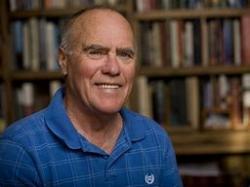Kipchoge’s performance in Vienna was a run (not a race). Kipchoge made history (but he didn’t break the world record).
Today is a day for the history books. At the Ineos 1:59 Challenge in Vienna, Austria, the great marathoner Eliud Kipchoge ran a marathon in 1:59.40.
He is the first runner to run a marathon under two hours.

Kipchoge wins in Berlin (photo, IAAF)
The record notwithstanding, should Kipchoge be held in the same regard as, say, Sir Roger Bannister, Donavan Brazier, Edwin Moses, or Mary Decker–other world record-holders? And was Kipchoge running, or was he racing?
In the modern urge to set records, athletes and corporations go to extremes. The petrochemical company INEOS created a flat course in Vienna. It was newly paved with roundabouts at both ends of a straight course. A pace car led a rotating cadre of professional runners who formed a shield for Kipchoge.
So, no wonder that this run will not be recognized as a world record, as was his Berlin race. Kipchoge acknowledged as much: “Berlin was about running a world record,” Kipchoge said this past week. “Vienna is about running and breaking history, like the first man on the moon.”
He’s correct in his assessment of the run in Vienna. He was running, not racing.
Recently in the World Championships, Donavan Brazier raced to a new American record in the 800 meters when he broke the 1985 record of Johnny Grey. Brazier’s race was a classic example of how to complete the 800. His third 200 meters is where he exploded–to speed to the finish in 1:42.34.
The other seven runners on the track with Brazier were trying to beat him, but the three dozen or so elites on the Vienna road with Kipchoge were there to help him run under two hours. From the finish line photo, it looks as if several of the black-clad pacers could have stayed with him to go under two hours.
In 1954, when Sir Roger Bannister ran the mile under four minutes, he had two teammates running with him. Sir Chris Chataway and Chris Brasher could be said to have been pacers for Bannister on that cinder Oxford track. However, Bannister still raced ahead of them with about 300 yards to go, and in so doing, he did what was thought (at the time) to be impossible.
I use dance as the analogy for those who are unfamiliar with racing. If one has an expert dancer taking the lead, then almost anyone can “follow along” and appear to have talent. However, going to the front all alone, as Brazier did, requires courage and grit.
Kipchoge summed it up best. In his Vienna run, he made history. Before long, he’ll set a world record.














